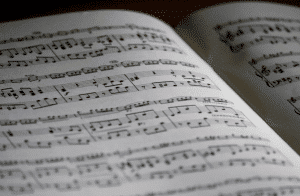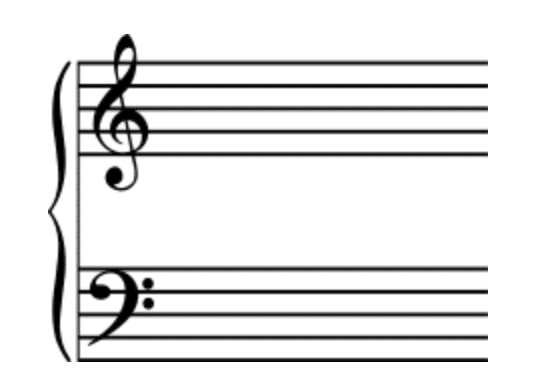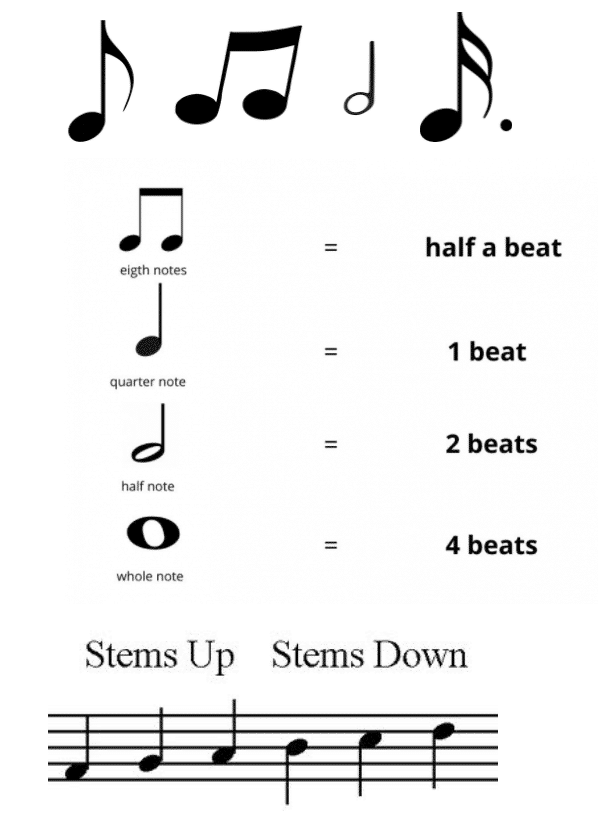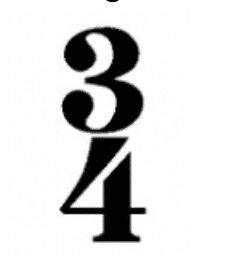
If you want a fun and rewarding activity, you will appreciate these helpful tricks to learning sheet music for piano or guitar learners.
Music education is a wonderful and rewarding experience that helps people to reduce stress while developing new skills.
However, many students can feel scared and intimidated when trying to learn sheet music.
In addition, sheet music can be frustrating for seasoned musicians who did not previously learn to read it and new students learning the guitar or piano.
While looking at a piece of music feels overwhelming, it can be simpler to understand when broken down. People are typically more eager in the beginning when learning to play but become complacent or give up because they find reading sheet music to be too challenging.
Understanding fundamentals are helpful. Certain things like key signatures and time signatures in music theory are where you will start your journey. But, then, you need to relate the understanding to your right and left hands and where they belong on the keyboard or the frets of your guitar.
But, how can you learn sheet music more easily?
As you might know, I’m a bestselling author, award winning designer and happiness researcher. I wrote a book called Happy Habits.
In my research, I learned a lot about how to make sure you develop positive habits which lead to your best life.
Two top contributors to happiness:
- doing anything musical
- learning a new skill – and stretching this skillset – until you’re really good at it
With this in mind, I decided to put together this article which shares helpful tricks to learning sheet music for piano or guitar lessons.
Helpful Tricks to Learning Sheet Music
Below are some great tips and tricks to learning sheet music. Coming up I will outline and help you understand how to break down and learn to read sheet music when playing the piano or guitar.
WHY LEARN SHEET MUSIC?
Sheet music at first glance, can seem like looking at an entirely different language. However, musical composition is artistic, and sheet music is made up of various notes and symbols that represent various elements.
Many artists tend to “play by ear,” which means they don’t reference sheet music, listen to notes, and learn to play them just by hearing them. While this can be an effective way to learn to play, it is not conducive to the expression and unique meaning that the song’s original composer may have intended.
On the other hand, it can help you memorize pieces for more preparation to perform live. In addition, the skills learned by the ability to read and write music will provide musicians with much more opportunity.
Your approach to reading music is what will allow you to succeed. If you approach it correctly and make it fun, you can read music sooner than you think.
SHEET MUSIC BASICS
Understanding all of the elements of a piece of music is not difficult. Here are the most common things you will see when looking at sheet music and the breakdown of what each means:
The Staff:

As you will learn, the staff has five lines and four spaces, each line representing its own letter or note. The lines and spaces go from letters/notes A to G, the sequence moving in order upwards on the staff, as seen below:

Treble & Bass Clef:

Each staff shows these symbols for the higher (Treble) and lower (Bass) registered notes. The notes are shown on each line of the staff to establish what notes will be played.
The Notes:

The notes show you how to make the music. Some notes are filled black while others are open; some have dots after them. Where it sits on, the staff tells you which note to play and for how many beats.
Some notes have a downward stem, while others go upward, helping you to read it. The flags on top of the notes and the dots after give you the length of time you hold the note. Sharps and flats will come later, too – these are known as the “black keys” on the piano, but a few are also white. The sharps and flats indicate half steps of notes rather than whole steps.
Time Signature:

The time signature is what divides your sheet music up into measures and lines. Each measure has a certain number of beats, and the time signature indicates how many beats are per measure. The top number is how many beats, and the bottom is what kind of note is considered a beat or given the total value. The most common time signatures you will see are 3/4, 4/4, 6/8, and 2/2.
HOW TO LEARN SHEET MUSIC – TIPS
Find a Calm, Quiet Study Place
It’s important to have a calm and quiet location when you are studying and practicing reading sheet music. It does not matter what this place is. For example, it could be a home office, a practice room, a coffee house, or a garden outside. Take some sheet music and pencils and get yourself set up in the space. It helps to keep your mind clear and focused.
If you know you plan to play on your piano or guitar while you learn, you might consider taking the leap and working with a professional. You can take Manhattan-based beginner piano lessons or beginner guitar lessons, and your instructor can help you learn to read sheet music easily.
Practice Regularly
When you practice learning and reading sheet music, get yourself into a routine. Set aside ten, fifteen, maybe even a half-hour each day if you can use to learn a little bit each day consistently. You can even help motivate yourself by rewarding yourself after reaching milestones, such as reading an entire phrase of music.
It also helps if you understand how you can learn your best. If you are a more visual person to understand, or if you need to say things out loud, then go for it. If it can help you retain and gain more insight, there is no limit to how you practice learning to read sheet music.
Tools of the Trade
Whoever said that you couldn’t get any help while learning to read music? There are plenty of resources and tools out there that will help you in your practice. Besides working with an instructor through lessons, you can also utilize a metronome to help you keep beats and rhythm, tapping your foot or clapping your hands along. Use your instrument to help test your knowledge of how well you understand key signatures.
Make it Into a Game
Who says you can’t make learning sheet music fun? Create musical games to get yourself familiar with key and time signatures, notes, symbols, and dynamics. Create or locate some musical flashcards so that you can quiz yourself on what they mean.
You could also create a matching game to match up the symbol with the correct word. There are countless possibilities for games here, and you can find a buddy to help you study and learn musical terms to make it even more fun.
Learn to Sight Read
Pick a song that you enjoy or want to learn – this is half the battle to helping in your learning, because who wants to learn a boring song or something uninteresting? Again, sight-reading is an excellent tool to helping you read music.
Take a bunch of songs you like in sheet music form, and get the music on paper without the words, only the notes. Then, try to play each of the notes without help and see if you can figure out the song. If you get stuck, you can always go back and refer to the original sheet music. It is a fun way to teach yourself how to sight-read.
MAINTAIN AND IMPROVE YOUR SKILLS
Once you have the hang of it, reading music takes continuous time for improvement. Creating that necessary routine and warming up your fingers with chords on your guitar or scales on the piano will help you advance and master your skills. With enough time and a lot of practice, you can become a pro at reading music in no time.
Live your happiest life
Think happier. Think calmer.
Think about subscribing for free weekly tools here.
No SPAM, ever! Read the Privacy Policy for more information.
One last step!
Please go to your inbox and click the confirmation link we just emailed you so you can start to get your free weekly NotSalmon Happiness Tools! Plus, you’ll immediately receive a chunklette of Karen’s bestselling Bounce Back Book!








